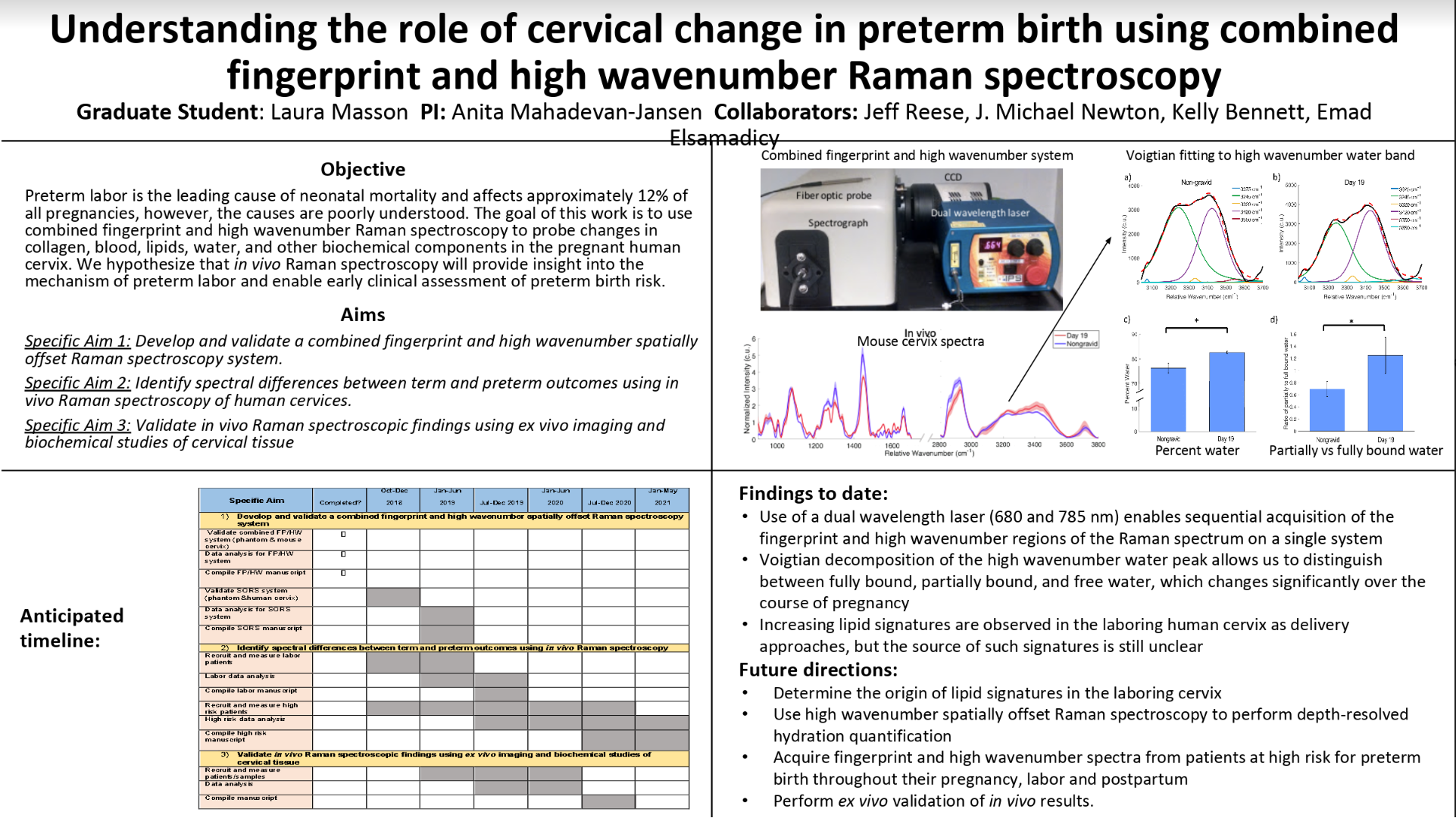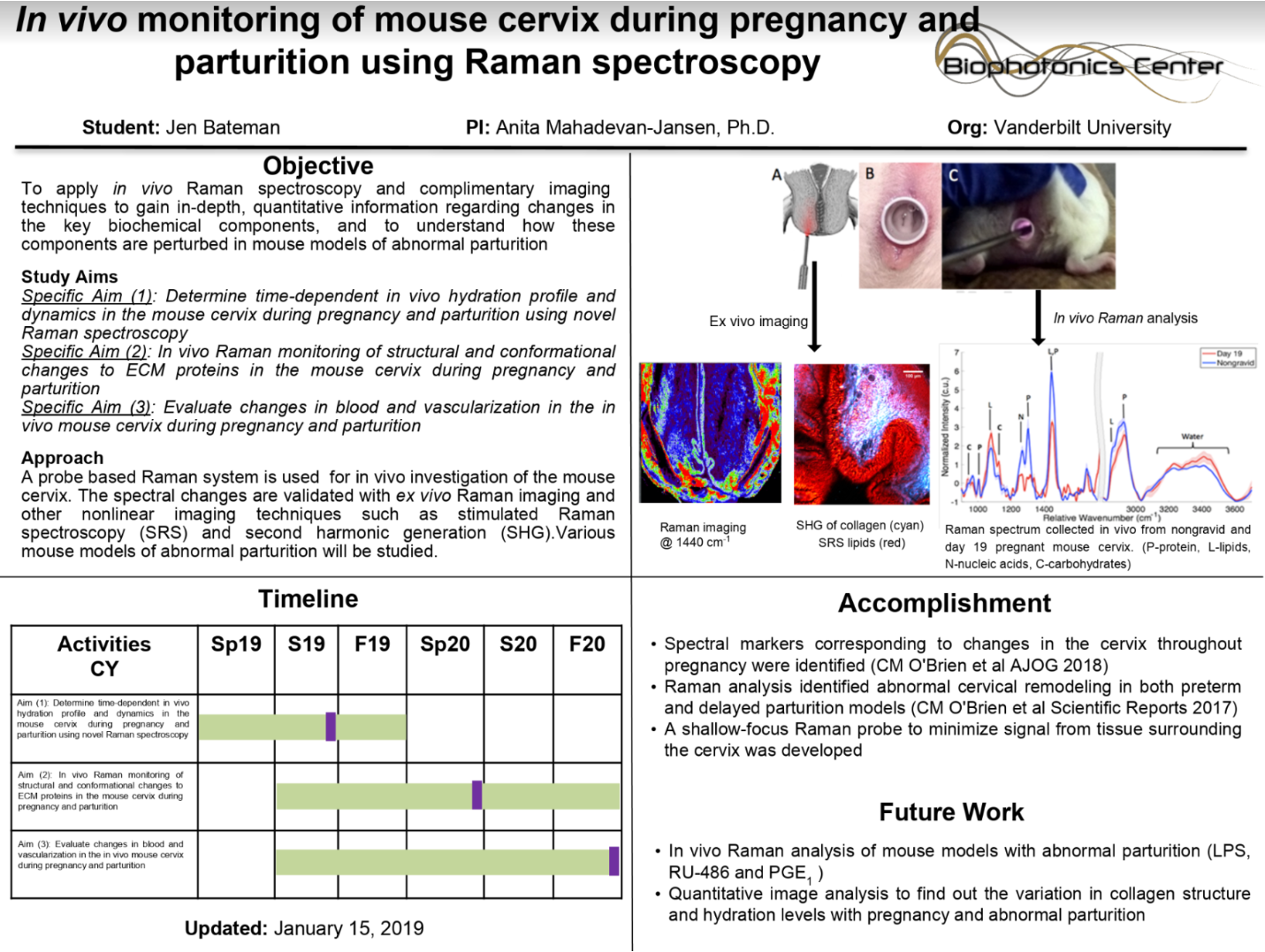Detecting Preterm Labor with Raman Spectroscopy
Prematurity is the second leading cause of neonatal mortality, leading to a myriad of complications, including delayed development and cerebral palsy. Currently, there is no way to accurately predict when a woman will deliver prematurely, making the prevention and treatment of preterm birth virtually impossible. While there are some populations at risk for preterm labor (patients with a history of previous preterm birth or uterine/cervical abnormalities), over half of all preterm births do not fall into any high-risk category.
This study seeks to predict and prevent preterm labor by using Raman spectroscopy to detect changes in the cervix during pregnancy. Results indicate that molecular and cellular changes that occur in precancerous as well as benign tissues yield distinct Raman features. Since Raman spectroscopy has been used to detect cancers in vivo in organs like the cervix and skin, it follows that spectra will change over the course of pregnancy. A study by Maul, et. al., showed that fluorescence decreased during pregnancy and increased during postpartum exams to pre-pregnancy levels. We believe similarly significant changes will occur in the Raman spectra obtained during the course of pregnancy.
In this study, Raman spectra from the cervix of pregnant mice and women will be acquired. Specific changes that occur due to cervical softening or changes in hormonal levels will be observed and quantified to output a likelihood that a female mouse or a woman will enter labor. Any algorithm that can be developed to predict when a woman will enter labor will greatly benefit the outcome for pregnant women and their children.

|

|
ResearchersGraduate Student
Primary Investigator Collaborators
|
ResearchersGraduate Student
Primary Investigator
|
